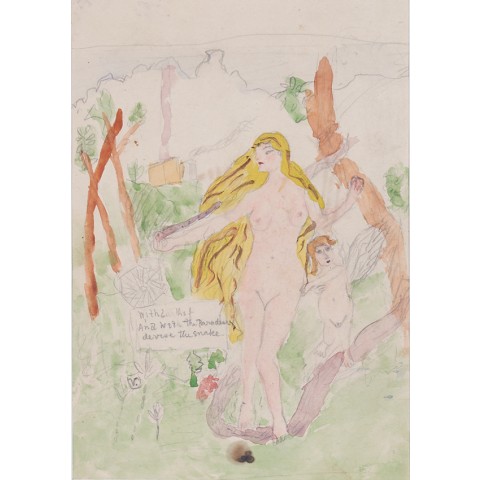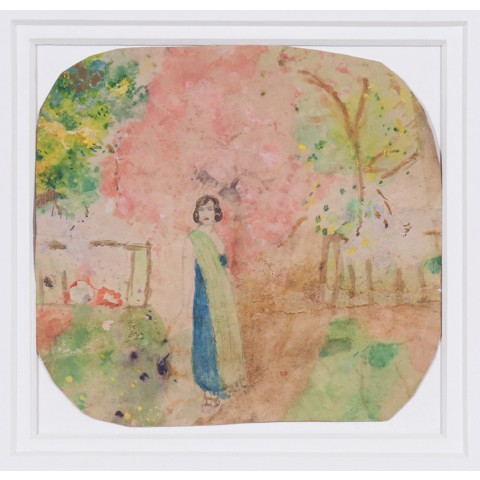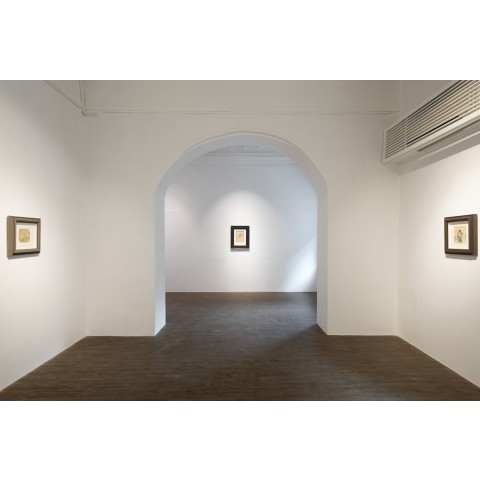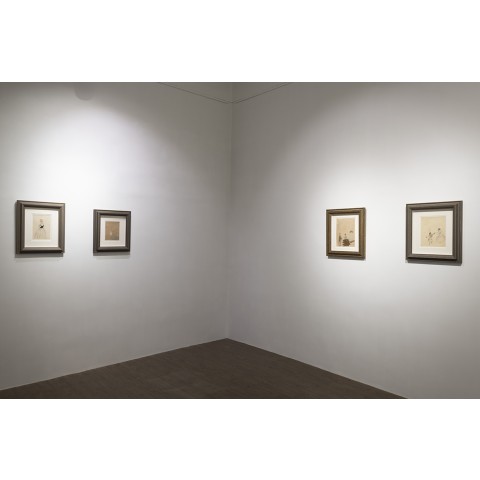
AMRITA SHER-GIL - A PORTRAIT OF OBSERVATIONS
November 01 - December 16 , 2023
“It seems to me that I never began painting,
that I have always painted. And I have always had, with a strange certitude,
the conviction that I was meant to be a painter and nothing else. Although I
studied, I have never been taught painting in the actual sense of the
word, because I possess in my psychological make-up a peculiarity that resents
any outside interference. I have always, in everything, wanted to find out
things for myself”, wrote Amrita Sher-Gil in an article ‘Modern Indian Art –
Imitating the Forms of the Past’, published in The Hindu on 1 November 1936.
A strongly opinionated and independent artist
with a keen eye for detail, Sher-Gil had tremendous clarity of mind which she used
to articulate her observations with openness in her artworks, writings and
letters. Creating through imagination, the artist always selected her subject
matter and form based on emotion rather than beauty. Sher-Gil filled the short
span of her life with travels, copious writing in various forms, painting and
art that opened her heart and mind to the worlds she lived in.
Born on 30 January 1913, she was christened
Dalma-Amrita (later rechristened Sher-Gil Maria Magdolna) and celebrated her
Sikh and Christian roots. The latter is evident in the Christmas feast painting
in this exhibition from the series, ‘Nicholas’, painted on 24th
December (c. 1920s). With her paternal roots from Umrao Singh Sher-Gil in
Lahore, Pakistan and maternal roots from Marie Antoinette in Budapest, Hungary,
the artist lived her life between Europe and pre-independent India. Between
these two cultures, her mind developed into thinking uniquely, parallelly and
in comparative ways at a very young age. Her sketches and paintings indicate
the amalgamation of worlds and languages, which she navigated deftly to form
her observations of people and circumstances – personal, social and political.
During her early school year in Dunaharaszti
near Budapest, Sher-Gil established close bonds with her Hungarian side of the family
including with her cousin Victor Egan who later became her husband. While in
Hungary, Sher-Gil began writing her own poems and stories and also began her
journey with art through coloured pencil drawings of Hungarian folk tales. She
documented daily activities around her, a habit that carried forward in her
observations and detailed opinions in both her paintings and writings. By the
time Sher-Gil moved to India at the age of eight with her family, she was
painting regularly and had already visited Paris. The works in this exhibition
belong primarily to the period of Sher-Gil’s childhood in Shimla, India in the
1920s and her years in Paris in the early 1930s.
Growing up in Shimla, a relatively British
colonial setting, the two Sher-Gil sisters, Amrita and Indira studied English
and French and took dance and piano classes. The artist continued to paint with
watercolours and pursue her pencil sketches that often returned to her memories
of Hungarian folk tales, Greek mythology and other scenes of home in Europe.
Fascinated by rituals she observed growing up in India, traditional scenes such
as those of a child bride appeared in her early sketchbooks alongside theatrical
settings of actors and stage sets. With close family friends as artists, a
photographer father and a culturally inclined mother who performed opera
concerts by greats such as Puccini and Bach, Sher-Gil was constantly exposed to
new forms of art which she observed closely to inspire her own works. Perhaps,
her father’s interest in photography was a key inspiration to Sher-Gil’s many
self-portraits. These portraits also possibly allowed the artist moments of
self-observation and reflection of human nature and satire.
As is evident from Sher-Gil’s writing and
paintings, she never hesitated to express her keenness to learn, to explore and
to experiment. She critiqued and praised her own works and wrote about them in
great detail in letters to her parents. Her sensibility to comment and critique
came from a very strong sense of observation that focused on details of
incidents, scenes, stories and exchanges that seeped in through her travels.
At the age of ten, Sher-Gil won her first art
prize for a work she painted in response to cinema, a topic that perused her
interest for a few more years to come with references to texts on German
expressionism films and music from Beethoven, Chopin and more. To encourage
this talent, Marie Antoinette took her daughters to Florence with the sculptor
Pasquinelli, in 1924, on the pretext of exposing them to a wider world of art.
However, Sher-Gil detested her time and school in Italy, and shortly after returned
to India with her mother and sister. With this immense exposure to art forms
and history at a young age, Sher-Gil’s impressionable mind was constantly absorbing,
observing and processing layers of opinions through cultures and people around
her.
1926, the year Sher-Gil’s uncle, Ervin
Baktay, visited the family in Shimla was a turning year for the young artist’s
practice. Baktay encouraged Sher-Gil to push her practice and move into
structural forms of reality rather than the more emotional and elaborate styles
that she had been focusing on until then. With this shift, the artist developed
bolder and stronger strokes with pencils and used watercolours as fillers for
her figures. The female form, as also seen in this exhibition, dominated this
period and went on to become a central part of Sher-Gil’s sketches and
paintings in her self-portraits as well as in studies and depictions of various
scenes. She focused on the form of figures and human relationships, all mainly
women.
In 1929, Sher-Gil moved to Europe with her
uncle, mother and sister to begin studying at École des Beaux-Arts in Paris. The
self-portraits from the early Parisian years show Sher-Gil with an immediate
adaptation to the fashion and culture of Paris. However, she did not allow
herself to settle in Paris and after gaining much recognition for her work in
Europe, she chose to return to India in 1934 for the rest of her career and
life until her untimely death in Lahore in 1941, at the young age of
twenty-eight. Despite a short life, Sher-Gil
paved her way into a significant period of modern Indian art history where her
works and writings are portraits for observation, even today.
by Veeranganakumari Solanki









